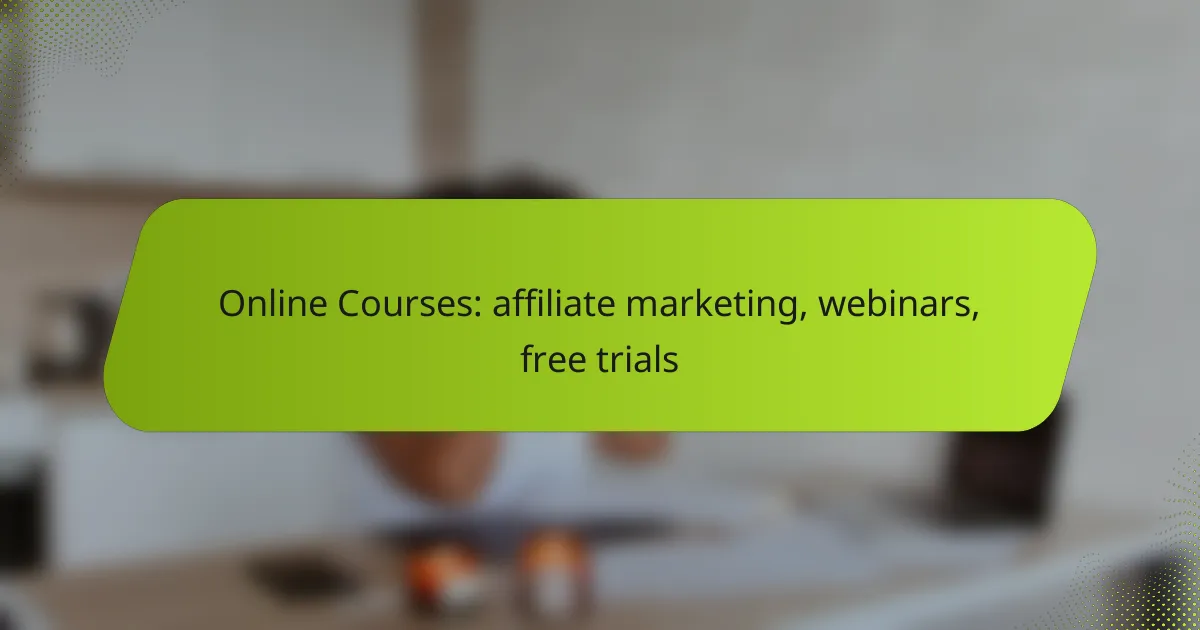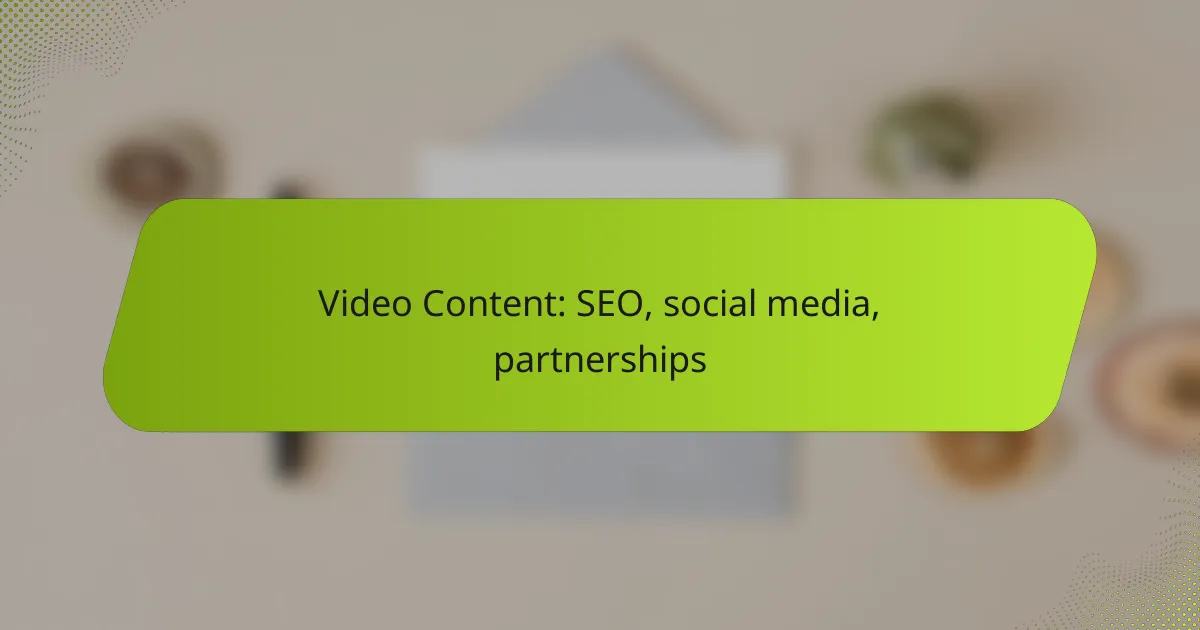E-books are powerful tools for enhancing email marketing efforts, acting as lead magnets that engage subscribers and drive conversions. By integrating effective social media strategies and forming partnerships, marketers can amplify their reach, attract targeted audiences, and boost sales through valuable content and trusted endorsements.
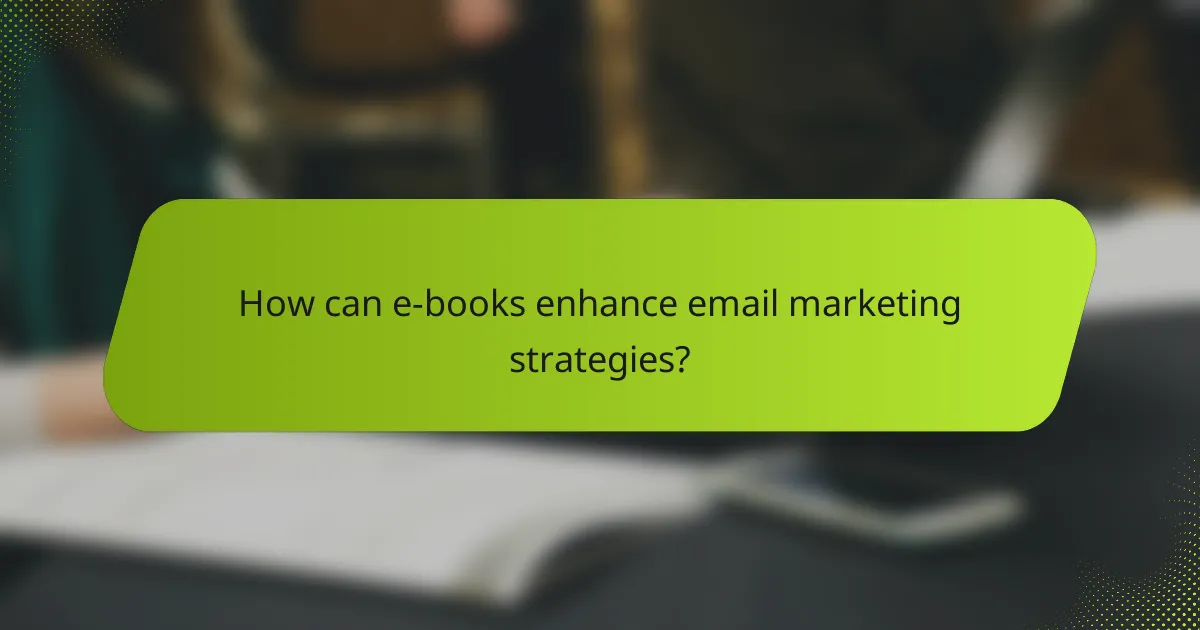
How can e-books enhance email marketing strategies?
E-books can significantly enhance email marketing strategies by providing valuable content that engages subscribers and encourages conversions. They serve as effective lead magnets, drawing in potential customers while allowing marketers to deliver targeted information that resonates with their audience.
Increased engagement rates
Using e-books in email marketing can lead to higher engagement rates as they offer in-depth information that captures the reader’s interest. When subscribers receive a well-crafted e-book, they are more likely to interact with the content, leading to increased click-through rates and time spent on your website.
To maximize engagement, ensure that the e-book is visually appealing and easy to read. Incorporate interactive elements such as hyperlinks and embedded videos to keep readers engaged throughout the material.
Lead generation tools
E-books are powerful lead generation tools that can help businesses grow their email lists. By offering a free e-book in exchange for contact information, marketers can attract potential customers who are interested in their niche.
Consider creating landing pages specifically for your e-book offers. Use clear calls to action and highlight the benefits of downloading the e-book to encourage sign-ups. Aim for a concise form that asks for essential information only, such as name and email address.
Personalized content delivery
With e-books, marketers can deliver personalized content tailored to the specific interests of their audience. By segmenting your email list based on user behavior or preferences, you can send targeted e-books that address the unique needs of different groups.
Utilize data analytics to understand what topics resonate most with your audience. This insight allows you to create more relevant e-books, enhancing the likelihood of conversions and fostering a stronger connection with your subscribers.
Automated follow-up sequences
Automated follow-up sequences can be effectively integrated with e-book campaigns to nurture leads over time. After a subscriber downloads an e-book, you can set up a series of automated emails that provide additional resources, tips, or related content.
Ensure your follow-up emails are spaced out appropriately, typically ranging from a few days to a week apart. This keeps your brand top-of-mind without overwhelming the subscriber. Include clear calls to action in each email to guide them toward the next step in their customer journey.
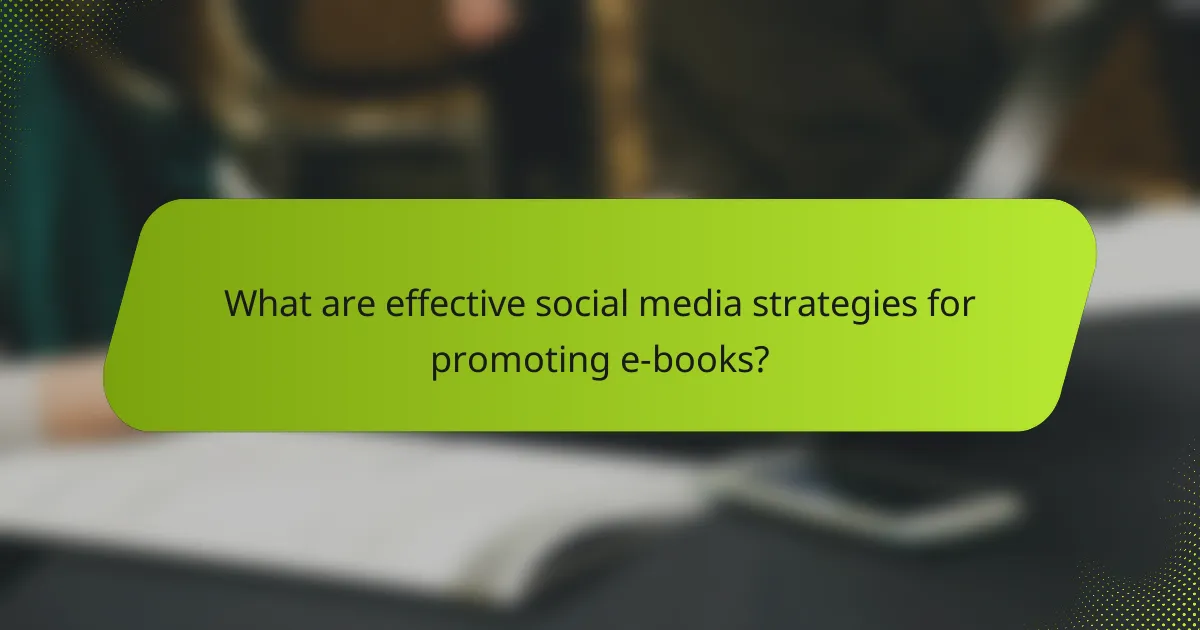
What are effective social media strategies for promoting e-books?
Effective social media strategies for promoting e-books include targeted ad campaigns, influencer partnerships, and content teasers. These approaches help reach specific audiences, leverage trusted voices, and generate interest through engaging content.
Targeted ad campaigns
Targeted ad campaigns allow you to reach specific demographics that are most likely to be interested in your e-book. Platforms like Facebook and Instagram offer robust targeting options based on interests, behaviors, and location, enabling you to tailor your ads effectively.
Consider setting a budget that aligns with your goals, whether it’s a few hundred dollars for a short campaign or a larger investment for ongoing promotion. Monitor the performance of your ads to optimize for better engagement and conversion rates.
Influencer partnerships
Collaborating with influencers can significantly boost your e-book’s visibility. Choose influencers whose audience aligns with your target readers, as their endorsement can lend credibility and attract new readers.
When approaching influencers, offer them a free copy of your e-book and discuss potential collaboration formats, such as reviews, giveaways, or social media takeovers. Ensure that any partnership feels authentic to their audience to maximize impact.
Content teasers and previews
Sharing content teasers and previews is an effective way to generate buzz around your e-book. Post excerpts, quotes, or visuals on your social media channels to pique interest and encourage shares.
Consider creating a countdown to your e-book launch or offering a limited-time free chapter to entice potential readers. Engaging visuals and compelling captions can enhance the appeal of your posts, driving more traffic to your e-book’s landing page.
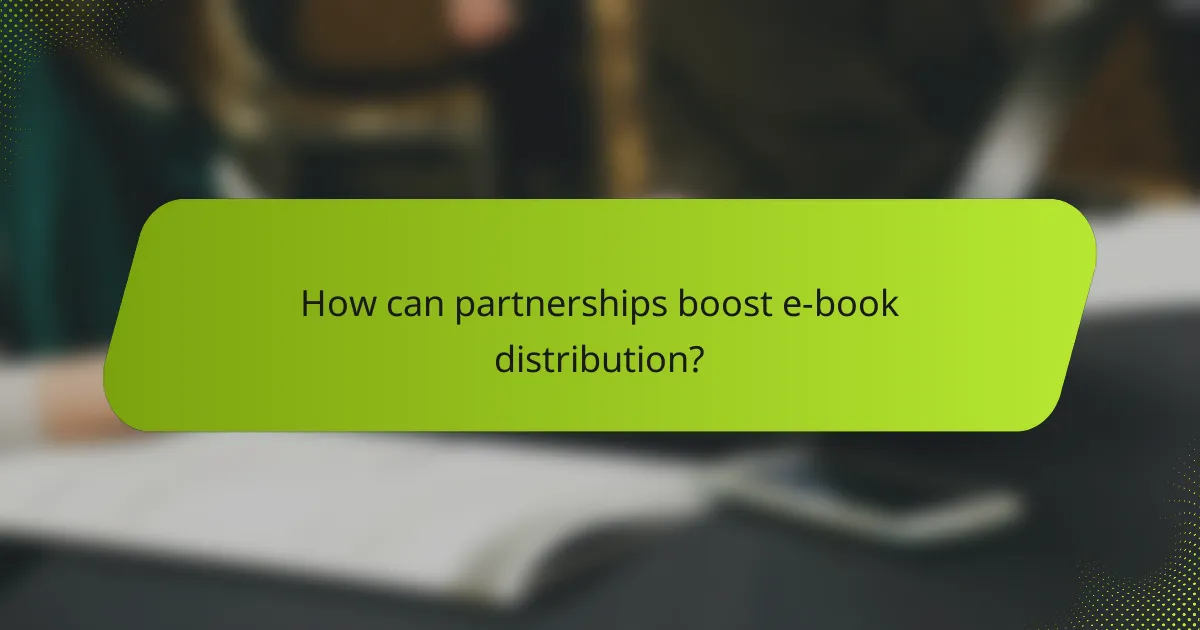
How can partnerships boost e-book distribution?
Partnerships can significantly enhance e-book distribution by leveraging the audiences and resources of other businesses or influencers. Collaborating with established entities can increase visibility, drive sales, and expand reach in a competitive market.
Collaborations with industry leaders
Teaming up with industry leaders can provide credibility and access to a broader audience. For instance, if an e-book on digital marketing is co-authored or endorsed by a well-known marketing expert, it can attract their followers and enhance trust among potential readers.
Consider reaching out to leaders in your niche for joint webinars or promotional events. This not only boosts your e-book’s visibility but also positions you as a credible source in your field.
Affiliate marketing programs
Implementing an affiliate marketing program allows partners to earn a commission for each e-book sale they generate. This incentivizes them to promote your e-book actively, expanding your distribution network without upfront costs.
When setting up an affiliate program, consider offering competitive commission rates, typically ranging from 10% to 30%. Ensure you provide affiliates with marketing materials and clear guidelines to maximize their effectiveness.
Cross-promotional strategies
Cross-promotion involves partnering with other authors or businesses to promote each other’s products. This can be done through shared newsletters, social media posts, or bundled offers that include multiple e-books.
To execute a successful cross-promotion, identify partners with complementary audiences. For example, if you write a cooking e-book, collaborating with a kitchenware brand can create a win-win situation, driving sales for both parties.
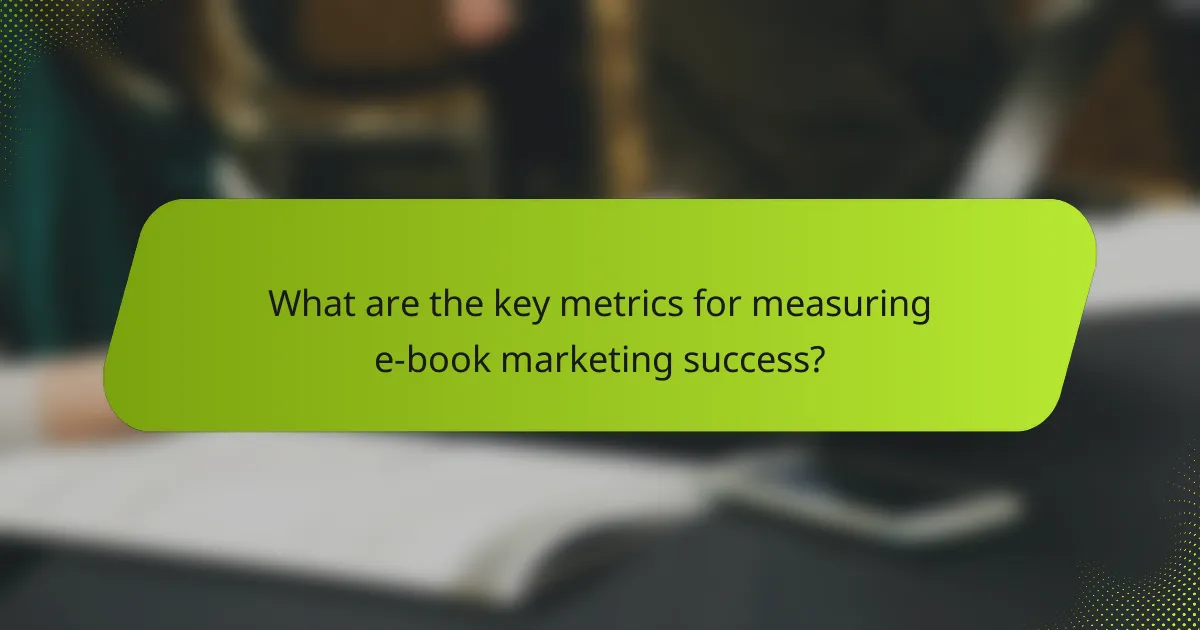
What are the key metrics for measuring e-book marketing success?
Key metrics for measuring e-book marketing success include download rates, email open and click-through rates, and social media engagement metrics. These indicators help assess the effectiveness of marketing strategies and identify areas for improvement.
Download rates
Download rates indicate how many users have successfully downloaded your e-book, reflecting its appeal and the effectiveness of your promotional efforts. A good download rate typically ranges from 5% to 20% of the total audience reached, depending on the marketing channel used.
To improve download rates, ensure your e-book is easily accessible and promote it through various platforms. Consider offering incentives, such as exclusive content or discounts, to encourage downloads.
Email open and click-through rates
Email open rates measure the percentage of recipients who open your marketing emails, while click-through rates indicate how many clicked on links within those emails. A healthy open rate usually falls between 15% and 25%, and click-through rates can range from 2% to 5%.
To enhance these metrics, craft compelling subject lines and ensure your emails are mobile-friendly. Segment your audience for targeted messaging, and include clear calls to action that guide readers toward downloading your e-book.
Social media engagement metrics
Social media engagement metrics include likes, shares, comments, and overall reach of your e-book promotions on platforms like Facebook, Twitter, and LinkedIn. High engagement rates suggest that your content resonates with your audience, which can lead to increased downloads.
To boost engagement, create visually appealing posts and use relevant hashtags. Encourage discussions by asking questions and responding promptly to comments. Collaborate with influencers to expand your reach and attract more potential readers.
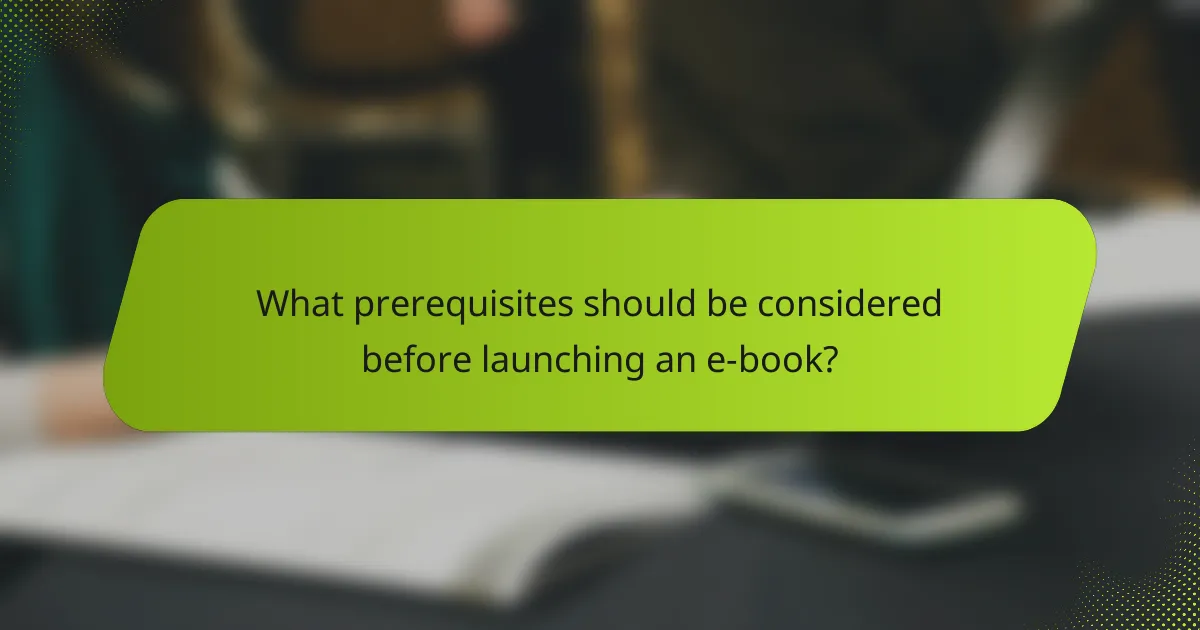
What prerequisites should be considered before launching an e-book?
Before launching an e-book, it’s essential to evaluate your target audience, ensure high content quality, and select appropriate marketing channels. These prerequisites will help maximize the e-book’s reach and effectiveness in achieving your goals.
Target audience research
Understanding your target audience is crucial for a successful e-book launch. Conduct surveys, analyze market trends, and utilize social media insights to identify the demographics, interests, and pain points of potential readers.
Consider creating buyer personas that encapsulate the characteristics of your ideal readers. This will guide your content creation and marketing strategies, ensuring they resonate with the audience you aim to attract.
Content quality assurance
High-quality content is vital for establishing credibility and engaging readers. Ensure that your e-book is well-researched, clearly written, and free from grammatical errors. Consider hiring professional editors or proofreaders to enhance the quality of your work.
Incorporate visuals, such as images or infographics, to break up text and make the content more appealing. Additionally, ensure that the formatting is consistent and user-friendly across different devices.
Marketing channel selection
Selecting the right marketing channels is essential for promoting your e-book effectively. Consider using email marketing, social media platforms, and partnerships with influencers or relevant organizations to reach your target audience.
Evaluate which channels your audience frequents most and tailor your messaging accordingly. For instance, if your audience is active on Instagram, focus on visually appealing posts and stories to generate interest in your e-book.
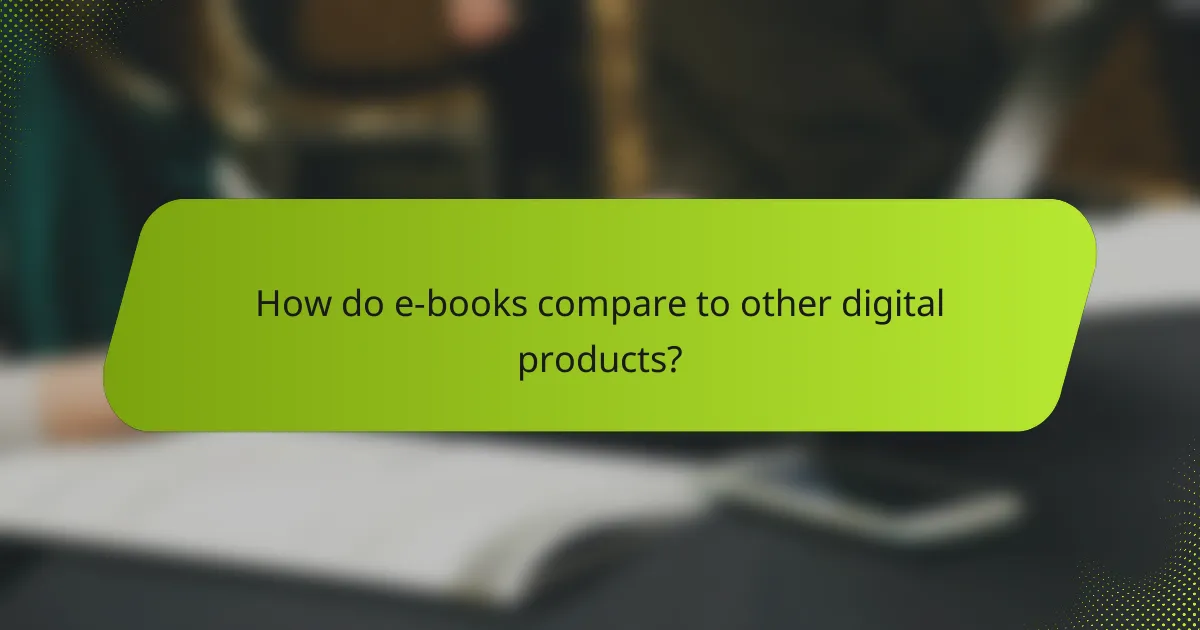
How do e-books compare to other digital products?
E-books are often more accessible and cost-effective than other digital products like online courses or software. They provide valuable content in a format that is easy to distribute and consume, making them a popular choice for both creators and consumers.
Cost-effectiveness
E-books typically have lower production and distribution costs compared to other digital products. While creating an online course may require video production, editing, and hosting fees, e-books can be written, formatted, and published with minimal expenses.
For instance, the cost of self-publishing an e-book can range from a few hundred to a couple of thousand dollars, depending on design and marketing efforts. In contrast, developing an online course may involve costs in the low thousands, including software subscriptions and promotional activities.
When considering cost-effectiveness, remember that e-books can be sold at various price points, often between $5 and $30, allowing for flexibility in pricing strategies. This makes them an attractive option for creators looking to maximize their return on investment while providing value to readers.

